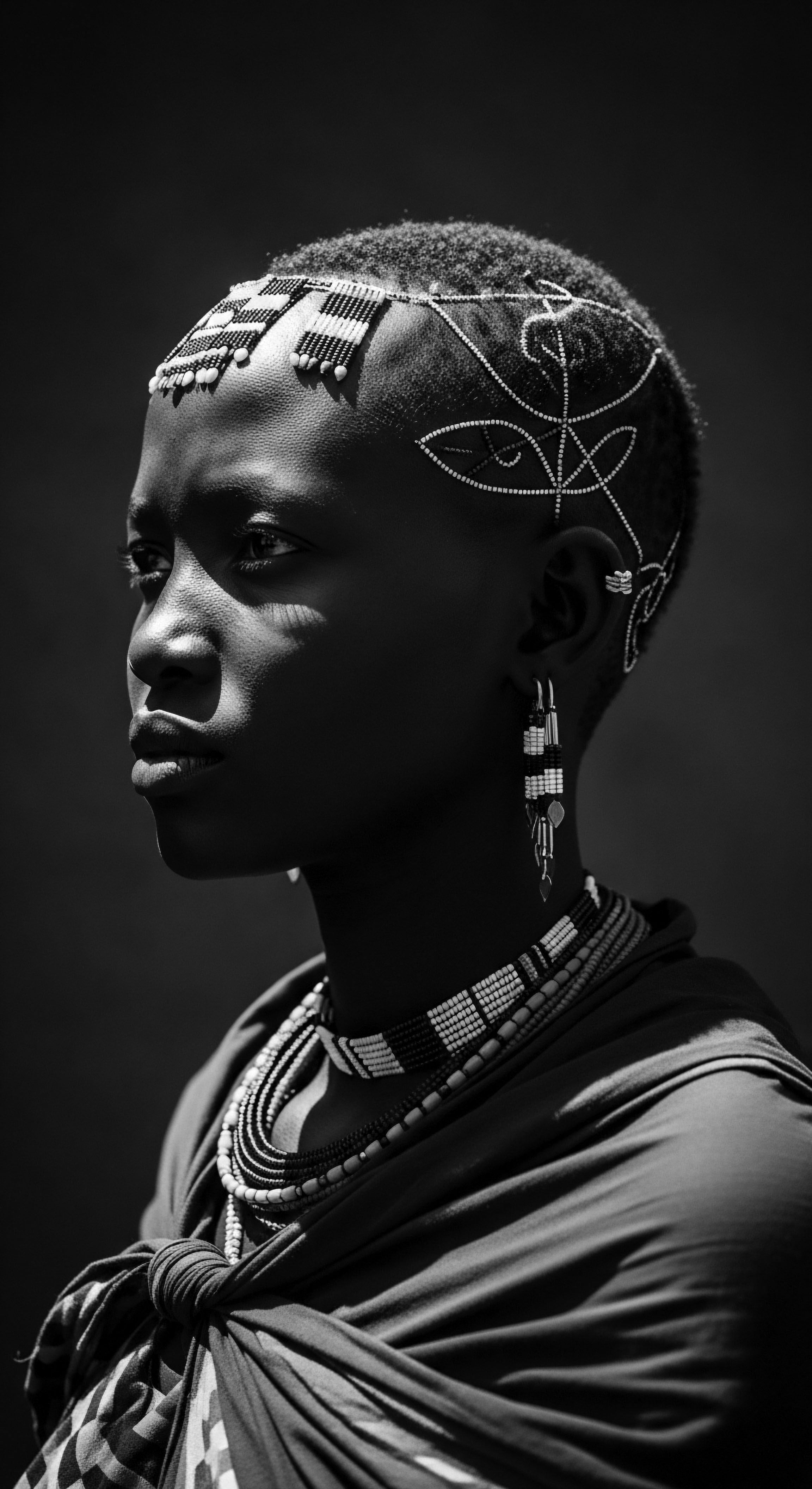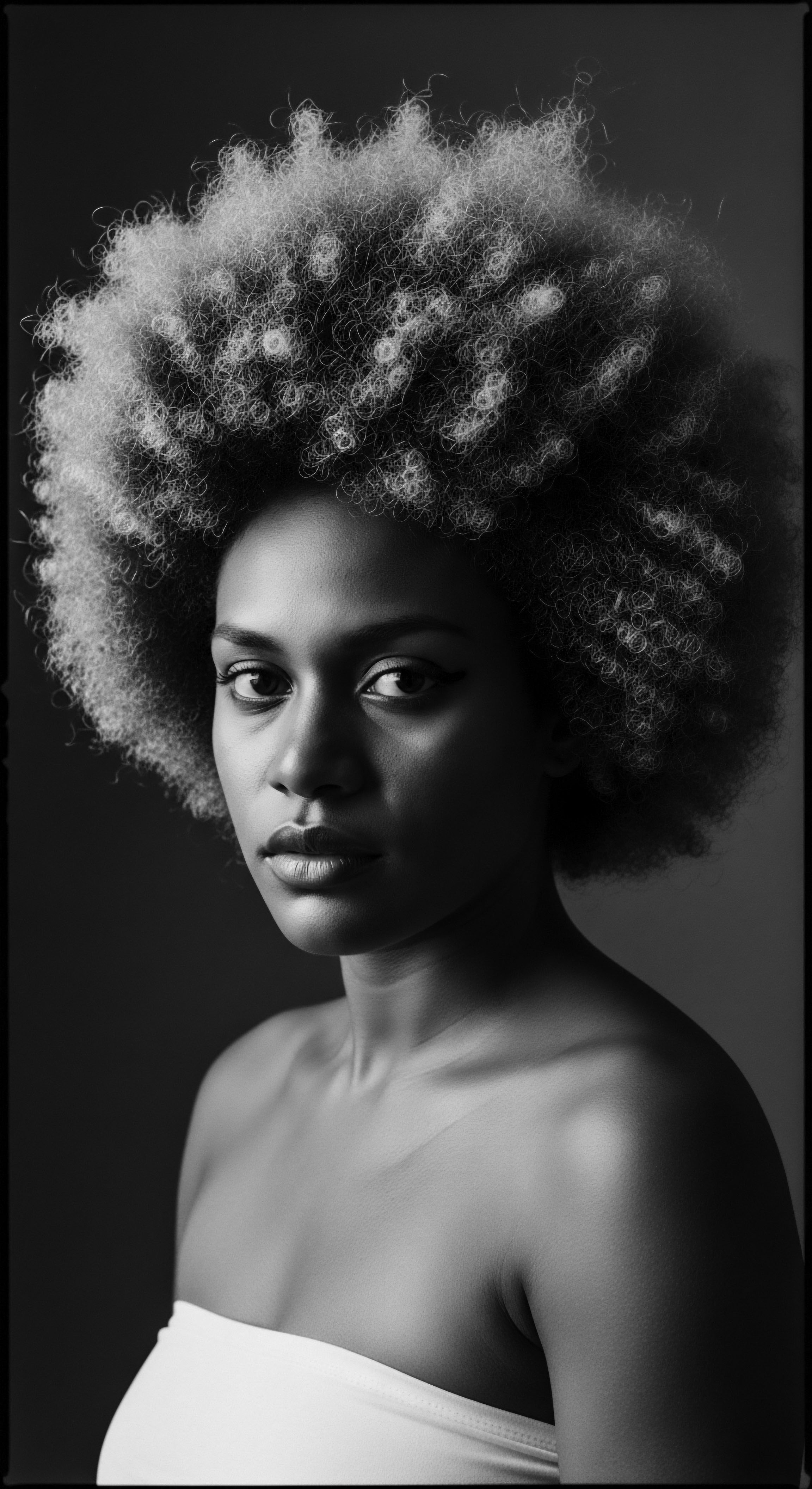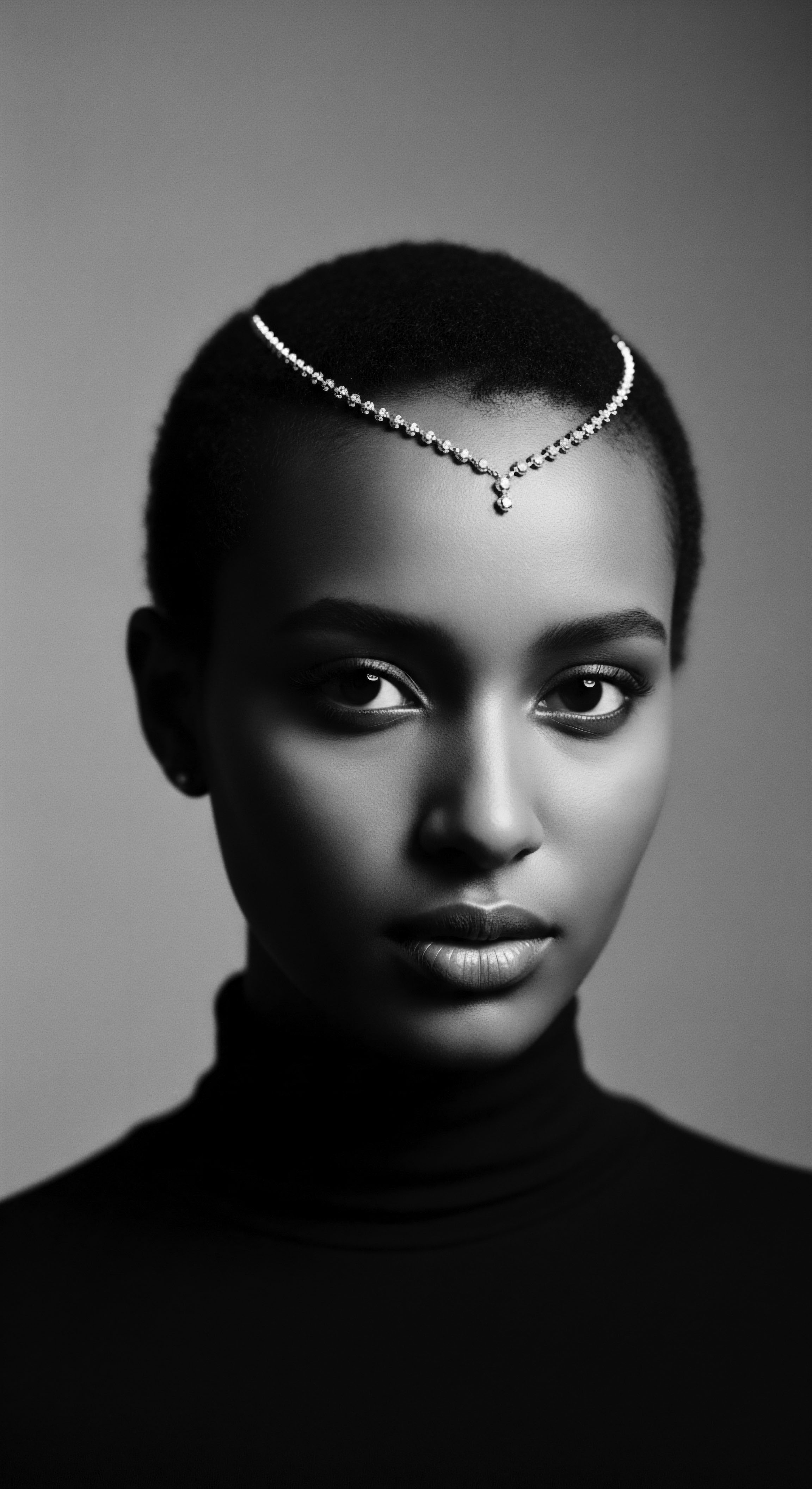
Roots
For generations, the stories of our strands have been etched into the very soil from which we draw sustenance, a living archive of resistance, beauty, and ancestral wisdom. Our textured hair, with its remarkable coils, curls, and waves, stands as a testament to journeys undertaken, legacies honored, and a profound connection to the earth beneath our feet. When we consider the potential of plant dyes to nurture this rich heritage, we step onto a path trod by countless foremothers and forefathers, their hands stained with the vibrant hues of leaves and roots. This exploration is not simply about color; it represents a deep inquiry into how the very essence of the botanical world can contribute to the vitality of our hair, intertwining elemental biology with practices passed down through the ages.

The Sacred Structure of Textured Hair
The architecture of textured hair, often an intricate helix of diverse patterns, holds a unique susceptibility and strength. Unlike straighter hair types, the undulating nature of curly and coily strands means cuticles can lift more readily, leading to increased porosity and potential moisture loss. This inherent structure, however, also provides a greater surface area, making it an exceptional canvas for the molecular embrace of plant-derived compounds.
Ancestral knowledge, long before the advent of electron microscopes, understood this delicate balance. They intuitively recognized that the hair’s surface, its very outermost layer, required thoughtful guardianship, a protection often found in nature’s own palette.
Consider the Cuticle, the outermost layer of the hair shaft, akin to protective shingles on a roof. In textured hair, these shingles are often more raised, a natural consequence of the hair’s coiled form. Plant dyes, unlike harsh chemical alternatives, often work by depositing pigments and beneficial compounds onto and just beneath this cuticle layer, rather than forcefully stripping it open.
This gentle interaction helps to smooth and reinforce the cuticle, minimizing the exposure of the delicate inner cortex. The resulting benefit manifests as improved light reflection, a natural gloss that speaks to enhanced surface integrity.

An Ancestral Lexicon of Hair Well-Being
The language of textured hair care, especially within Black and mixed-race traditions, stretches back beyond recorded history, a rich tapestry of communal terms and shared understanding. From terms describing various curl patterns – like ‘kinky’ or ‘nappy,’ words once weaponized but now reclaimed as identifiers of beauty and strength – to the collective understanding of moisture needs and protective styling, this lexicon carries immense cultural weight. Within this traditional framework, plant applications were often described not just for their color, but for their ability to bring a glow or life to the hair, terms that hint at improved health and vibrancy.
The specific classifications of hair, whether through scientific typing systems or through generational descriptors, all point to a singular truth ❉ textured hair possesses distinct requirements. Plant dyes, rooted in their botanical origins, have historically offered a way to address these requirements without compromising the hair’s fundamental well-being. The knowledge passed down regarding which leaves to crush, which roots to steep, and which barks to boil speaks to an understanding of hair physiology that preceded formal scientific inquiry, a wisdom deeply ingrained in the practical application of nature’s bounty.
The story of textured hair is not merely one of aesthetic choices, but a profound narrative of survival, identity, and the enduring wisdom gleaned from the earth’s embrace.

Echoes of Growth and Nourishment
The hair growth cycle, a journey from emerging follicle to shedding strand, is influenced by myriad factors ❉ genetics, nutrition, environment, and care practices. For our ancestors, who lived in close communion with their surroundings, the understanding of these influences was often observational and holistic. They recognized that healthy hair did not exist in isolation; it was a visible sign of internal balance, of a body well-nourished and a spirit in harmony.
Plant dyes, in many traditional contexts, were part of a broader wellness regimen. The very act of gathering, preparing, and applying these natural pigments could be a ritual of self-care, a moment of connection to the rhythm of the seasons and the gifts of the land.
This ancestral recognition extends to the understanding that healthy hair is fundamentally rooted in a healthy scalp. Many traditional plant dye formulations included ingredients renowned for their anti-inflammatory or antimicrobial properties, long before these terms entered scientific discourse. For instance, the use of Henna (Lawsonia inermis), beyond its vibrant reddish-orange tint, has been historically valued for its antifungal and antibacterial qualities, contributing to a balanced scalp microbiome that directly supports robust hair growth. These practices reveal an integrated approach to hair care, where coloring and conditioning were often one and the same, a seamless expression of holistic well-being.

Ritual
The application of plant dyes to textured hair, far from being a mere cosmetic procedure, has historically been a ritual—a deliberate, often communal act steeped in cultural significance and practical wisdom. These ceremonies of color reflected societal status, marked rites of passage, and offered a powerful medium for self-expression. The methods employed, the tools utilized, and the very transformations sought were all deeply woven into the fabric of life, celebrating the unique characteristics of coily and curly strands.

Protective Styles and Plant Alchemy
For millennia, protective styles have shielded textured hair from environmental stressors and manipulation, preserving its length and vitality. From intricate braids adorned with cowrie shells in West Africa to coiled locs in ancient Kemet, these styles were not only artistic expressions but also strategic forms of hair care. Plant dyes often found their place within these traditions, working in tandem with the styling to fortify the hair.
For example, in many North African and Middle Eastern cultures, henna was applied not just for its enduring color but for its ability to coat the hair shaft, making it feel thicker and more resilient, especially when interwoven into protective styles (Chaudhari & Patel, 2011). This natural coating could help reduce friction between strands and external elements, offering a layer of defense.
Consider the synergy ❉ a braided style keeps fragile ends tucked away, minimizing breakage, while a plant dye infused with natural tannins and antioxidants helps to strengthen the cuticle, adding another shield. This approach underscores a foundational principle of ancestral hair care ❉ every step, from cleansing to styling, contributed to the hair’s overall well-being, an interplay of function and aesthetic beauty.

Natural Styling How Does Ancestral Wisdom Inform Modern Hair Care?
The art of defining natural texture, making coils and curls sing, has been practiced for generations using what nature provided. Before the era of gels and creams, people turned to mucilaginous plants, natural clays, and nourishing oils to enhance curl definition. Plant dyes, in their very preparation, often incorporated these elements.
A simple mix of henna powder, warm water, and perhaps a touch of hibiscus or amla powder creates a paste that, upon application, not only imparts color but also offers a conditioning treatment. The plant compounds bind to the hair’s Keratin, adding a slight weight and definition that can enhance the natural curl pattern.
Traditional application methods often involved meticulous sectioning and saturation, ensuring every strand received the benefit. This painstaking process reflected a deep respect for the hair, recognizing it as a vital part of one’s being. The absence of harsh chemicals meant a slower, gentler transformation, aligning with the rhythms of nature and allowing for the hair to truly absorb the botanical benefits.
The quiet hum of communal hair rituals, with the scent of plant dyes in the air, speaks to generations of wisdom passed through touch and shared purpose.
| Plant Dye Henna (Lawsonia inermis) |
| Primary Color (Traditional) Reddish-Orange, Auburn |
| Associated Hair Health Benefits (Ancestral & Modern Understanding) Strengthens hair shaft, provides UV protection, balances scalp, reduces flaking. |
| Plant Dye Indigo (Indigofera tinctoria) |
| Primary Color (Traditional) Blue, Black (when combined with henna) |
| Associated Hair Health Benefits (Ancestral & Modern Understanding) Adds depth of color, contributes to hair thickness, can enhance shine. |
| Plant Dye Amla (Phyllanthus emblica) |
| Primary Color (Traditional) Brownish (often used with other dyes) |
| Associated Hair Health Benefits (Ancestral & Modern Understanding) Rich in Vitamin C, known to condition hair, promote hair growth, reduce premature graying. |
| Plant Dye Hibiscus (Hibiscus sabdariffa) |
| Primary Color (Traditional) Reddish Tones |
| Associated Hair Health Benefits (Ancestral & Modern Understanding) Conditions, adds gloss, may stimulate follicles, reduces scalp irritation. |
| Plant Dye These botanical gifts from the earth represent a continuum of care, bridging ancient wisdom with contemporary appreciation for natural hair vitality. |

A Complete Textured Hair Toolkit From Generation to Generation?
The tools of hair care have evolved, yet many traditional instruments resonate with efficiency and reverence for the hair. Ancestral tools for plant dye application might have included wooden spatulas, clay bowls, or simply the hands themselves—the warmth and dexterity of human touch being a primary instrument. These simple yet effective tools were part of a holistic practice that respected the hair’s integrity.
The enduring value of these natural practices, informed by centuries of observation and refinement, finds its reflection in today’s burgeoning interest in clean beauty. We are, in a sense, returning to the source, rediscovering the efficacy of botanical ingredients that our ancestors knew so intimately. The transformation offered by plant dyes extends beyond a change in hue; it is a holistic shift toward honoring the hair’s natural texture, strengthening its inherent resilience, and connecting with a legacy of vibrant self-care.

Relay
The journey of plant dyes and their interaction with textured hair extends beyond ancient applications, moving into a contemporary understanding that marries ancestral wisdom with scientific rigor. This convergence allows us to discern precisely how these botanical agents contribute to hair health, offering a compelling alternative to synthetic chemical dyes that often compromise the very integrity of the hair shaft. This segment delves into the intricate mechanisms by which plant dyes can fortify and revitalize textured strands, drawing connections between historical observation and modern research.

The Phytochemical Symphony on the Hair Shaft
Plant dyes are complex matrices of phytochemicals, each contributing to the overall effect on the hair. Unlike single-molecule synthetic dyes, natural pigments like Lawsone (from henna) or Indigotin (from indigo) are accompanied by a retinue of other compounds—tannins, flavonoids, and polysaccharides—that work in concert. These supplementary compounds are particularly important for textured hair. For instance, tannins, a class of astringent polyphenols present in many plant dyes (such as black tea or oak gall extracts, sometimes used in traditional hair rinses), can have a binding effect on hair proteins.
This interaction may contribute to a perceived strengthening or thickening of the hair shaft (Padilla, 2017). This subtle interaction differs from the aggressive chemical processes of oxidation dyes, which break down existing hair melanin and can compromise the structural bonds within the hair.
Moreover, many plant dyes possess inherent antioxidant and anti-inflammatory properties. Consider the vibrant hues of plants rich in anthocyanins, or the deep greens of chlorophyll-rich botanicals. When applied to the scalp and hair, these compounds can combat oxidative stress, which is a known contributor to hair follicle damage and premature hair graying. This protective quality speaks directly to the holistic approach of ancestral care, where the health of the scalp was understood to be inextricably linked to the vitality of the hair itself.

Can Plant Dyes Protect Textured Hair from Environmental Stress?
The resilience of textured hair, so celebrated in cultural narratives, is often tested by environmental factors such as sun exposure and pollution. Chemical dyes can exacerbate this vulnerability by weakening the hair’s natural defenses. Plant dyes, however, can offer a layer of natural protection. The very act of coloring with certain plant materials creates a physical barrier on the hair shaft.
Henna, for instance, forms a protective film around the individual hair strands, which can act as a natural UV filter, shielding the hair’s melanin and protein structure from sun damage. This protective quality is particularly valuable for textured hair, which can be more susceptible to dryness and breakage when exposed to harsh elements.
A study by Singh et al. (2012) explored the protective effects of herbal hair colorants, noting that formulations containing various plant extracts demonstrated superior antioxidant activity and reduced damage from environmental stressors compared to synthetic dyes. The long-term implications for textured hair health are substantial ❉ less damage from external aggressors means better moisture retention, reduced split ends, and a more robust overall strand, allowing for greater length retention over time. This scientific corroboration of ancient practices provides a powerful bridge between tradition and modern understanding.
The scientific validation of plant dyes echoes ancestral insights, confirming that nature’s palette offers not just color, but genuine care for textured strands.

Restoring Balance to the Scalp Microbiome
A healthy scalp is the fertile ground from which healthy hair grows, and the scalp’s microbiome—the community of microorganisms living on its surface—plays a pivotal role. Many commercial hair dyes contain harsh chemicals that can disrupt this delicate balance, leading to irritation, dryness, or even allergic reactions. Plant dyes, in contrast, often possess inherent antimicrobial and anti-inflammatory properties that can support a balanced scalp environment.
- Neem (Azadirachta indica) ❉ A well-documented botanical, often incorporated into traditional hair remedies and sometimes used with dyes, recognized for its antifungal and antibacterial properties, which contribute to a healthy, balanced scalp.
- Rosemary (Rosmarinus officinalis) ❉ Used in infusions and rinses, this herb supports scalp circulation and possesses antioxidant capabilities, contributing to an environment conducive to hair growth.
- Bhringraj (Eclipta prostrata) ❉ A staple in Ayurvedic traditions, known for its calming effect on the scalp and its historical association with promoting hair vitality.
The application of plant dyes, when sourced and prepared with purity, offers a path to coloring hair that respects the intricate ecosystem of the scalp. This deep engagement with natural elements represents a continuous relay of knowledge—from ancient herbalists who observed the healing properties of plants, to modern researchers who unravel their molecular complexities, all converging on the profound benefits for textured hair health. This continuous rediscovery reinforces the enduring relevance of heritage in shaping contemporary care.

Reflection
Our exploration into the potential of plant dyes to improve textured hair health has been a journey through time, a quiet meditation on the enduring wisdom woven into the very fabric of our heritage. From the elemental biology of the hair strand, through the tender rituals of ancestral care, to the precise mechanisms understood by modern science, a consistent thread emerges ❉ the profound connection between textured hair and the earth’s natural bounties.
This is a story of resilience, not only of the strands themselves, but of the knowledge systems that have preserved their vitality against historical odds. The deep, often unspoken, understanding that textured hair is more than an adornment, that it is a conduit of identity and a living testament to ancestry, pulses at the heart of this inquiry. Plant dyes, in this context, are not merely colorants; they are extensions of a legacy of self-care, a conscious choice to honor the body with ingredients that whisper of soil, sun, and rain.
As we look forward, the rediscovery and embracing of plant-based hair care practices stand as a testament to the cycles of wisdom. We are called to remember the hands that first crushed indigo leaves, the voices that shared the secrets of henna, and the communities that celebrated the vibrant spectrum of hair in all its forms. The ‘Soul of a Strand’ ethos reminds us that each coil, each curl, carries an entire universe of experience and inheritance. By choosing plant dyes, we align ourselves with a tradition of holistic well-being, acknowledging that true radiance stems from a respectful interplay with nature, mirroring the rich, unbound helix of our collective heritage.

References
- Chaudhari, A. T. & Patel, V. H. (2011). Hair dyes of natural origin ❉ A review. Journal of Pharmacognosy and Phytochemistry, 1(1), 1-6.
- Padilla, L. (2017). The Science of Hair ❉ A Comprehensive Guide to Hair Biology, Chemistry, and Care. Nova Science Publishers.
- Singh, S. Bhatia, J. & Dubey, S. K. (2012). Herbal hair colorants ❉ A review. International Journal of Pharmaceutical Sciences Review and Research, 13(1), 22-26.
- Byrd, A. & Tharps, L. (2014). Hair Story ❉ Untangling the Roots of Black Hair in America. St. Martin’s Griffin.
- Herreman, F. (2001). Hair in African Art and Culture. Museum for African Art.
